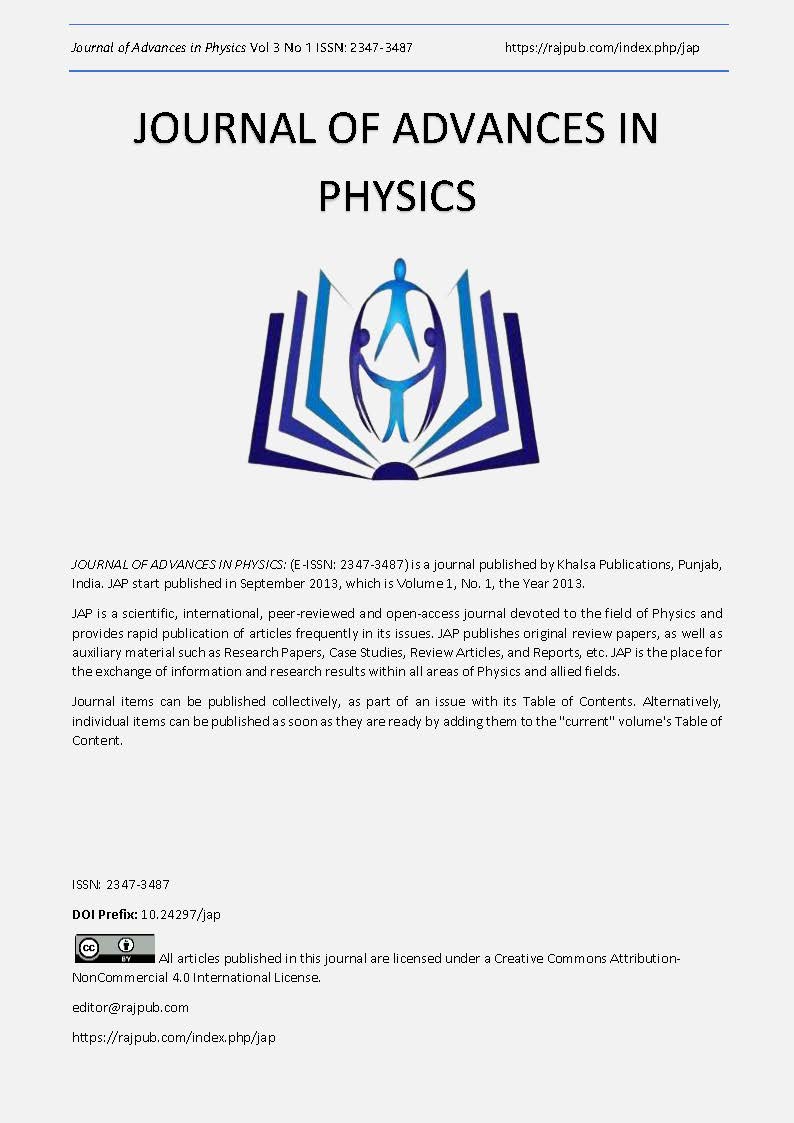Detection of Pb in Whitening Creams via Laser Induced Breakdown Spectroscopy
DOI:
https://doi.org/10.24297/jap.v3i1.2086Keywords:
LIBS, Whitening Cream, Lead, ICP-MS, concentrationAbstract
Recently whitening creams have been widely used to protect UV light exposure due to the depletion of ozone layer. The demand attracts the rapid growth of various whitening creams in the market. The detection is required in order to determine the constituent of the whitening cream, whether it contains dangerous element like heavy metal (Pb, Hg or Cr). In this attempt, laser induced breakdown spectroscopy (LIBS) technique was deployed to analyse the existence of heavy metal. Several whitening creams available in retail shop and open market were investigated. Cryogenically frozen technique was utilized to convert the emulsion into solid form. Lead Pb was detected in all the tested samples in the range of 2 - 5 ppm. The LIBS results were validated by Inductive Couple Plasma Mass Spectroscopy (ICP-MS) technique. The high sensitivity, portable and in-situ LIBS system allow simple, faster and easy heavy metal detection. This enhances the procedure of inspection in cosmetic industries
Downloads
References
Martens. W.J.M., den Elzen. M.G.J.,Slaper.H., Koken. P.J.M. and Willems.B.A.T. (1996).The impact of ozone depletion on skin cancer incidence: an assessment of the Netherlands and Australia. Environmental Modelling and Assessment 1, 229-240.
Chalani Rubesinghe and Hemantha Withanage, 2013. Mercury and lead contamination in selected whitening/fairness cream samples found in Sri Lanka. Centre for Environmental justice/friends of the earth Sri Lanka January 2013.
Meyer. P.A., Brown. M.J. and Falk. H. (2008).Global approach to reducing lead exposure and poisoning. Mutation Research. 659, 166-175.
WHO, World Health Organization. (1995).Environmental health Criteria 165: Inorganic Lead, Geneva : International Programme on Chemical Safety. World Health Organization, Geneva.
Al-Saleh. I., Al-Enazi.S.and S. Neptune.(2009). Assessment of lead in cosmeticproducts.Regulatory Toxicology and Pharmacology. 54, 105-113.
Papanikolaou. N.C., Hatzidaki. E.G., Belivanis.S.,Tzanakakis.G.N. andTsatsakis.A.M.(2005). Lead toxicity update.A brief review.Medical Science Monitor.11, RA329-RA336
Vahter. M., Berglund.M.andAkesson.A. , (2004).Toxic metals and the menopause.Journal of the British Menopause Society. 10,60-64.
Amit. S.C., Rekha. B., Atul. K.S., Sharad. S.L., Dinesh.K.C.andVinayak.S.T. (2010).Determination of lead and cadmium in cosmetics products.Journal of Chemical andPharmaceutical Research. 2(6),92-97.
Gondal. M.A., Seddigi. Z.S., Nasr. M.M. and Gondal.B.(2010). Spectroscopic detectionof health hazardous contamination in lipstick using laser induced breakdownspectroscopy. Journal of Hazardous Materials. 175, 726-732.
Lazic. V., Colao.F., Fantoni.R. and Spizzicchino,V. (2005). Laser-induced breakdown Spectroscopy in water: Improvement of The Detection Threshold by Signal Processing. SpectrochimicaActa Part B. 60, 1002-1013.
Demetrios. A., Stelios. C., and Costas. F. (1997).Laser Diagnostics of Painted Artworks: Laser-Induced Breakdown Spectroscopy in Pigment Identification. Applied Spectroscopy.51(7), 1025-1030.
Burakov. V. S., Tarasenko. N. V., Nedelko. M. I, Kononov. V. A., Vasilev. N. N. and Isakov. S. N. (2009).Analysis of Lead and Sulfur in Environmental Samples by Double Pulse Laser Induced Breakdown Spectroscopy. SpectrochimicaActa Part B.64,141-146.
Harmon. R. S., Delucia. F. C., McManus. C. E., McMillan. N. J., Jenkins. T. F., Walsh. M. E. and Miziolek. A. (2006).Laser-induced Breakdown spectroscopy – An Emerging Chemical Sensor Technology for Real-Time Field-Portable, Geochemical, Mineralogical, and Environmental Applications. Applied Geochemistry.21,730-747.
Mansoori. A., Roshanzadeh. B., Khalaji. M., and Tavassoli. S. H.(2011).Quantitative analysis of cement powder by laser induced breakdown spectroscopy.Optics and Lasers in Engineering. 49, 318-323.
Pauline Chan, 2009. Investigation of Commodity Food Standards and Analytical Methods in Asia-Malaysia, Singapore & Philippines, International life science Institute, ILSI Southeast Asia Region,
Nnorom, I.C., Igwe, J.C.1 and Oji-Nnorom C.G.(2005).Trace metal contents of facial (make-up) cosmetics commonly used in Nigeria .African Journal of Biotechnology.4(10), 1133-1138.
Smith D.R. and Flegal A.R.(1995). Lead in the biosphere; Recent trends. Ambio, 24(1),21-23.
Downloads
Published
How to Cite
Issue
Section
License
 All articles published in Journal of Advances in Linguistics are licensed under a Creative Commons Attribution 4.0 International License.
All articles published in Journal of Advances in Linguistics are licensed under a Creative Commons Attribution 4.0 International License.




